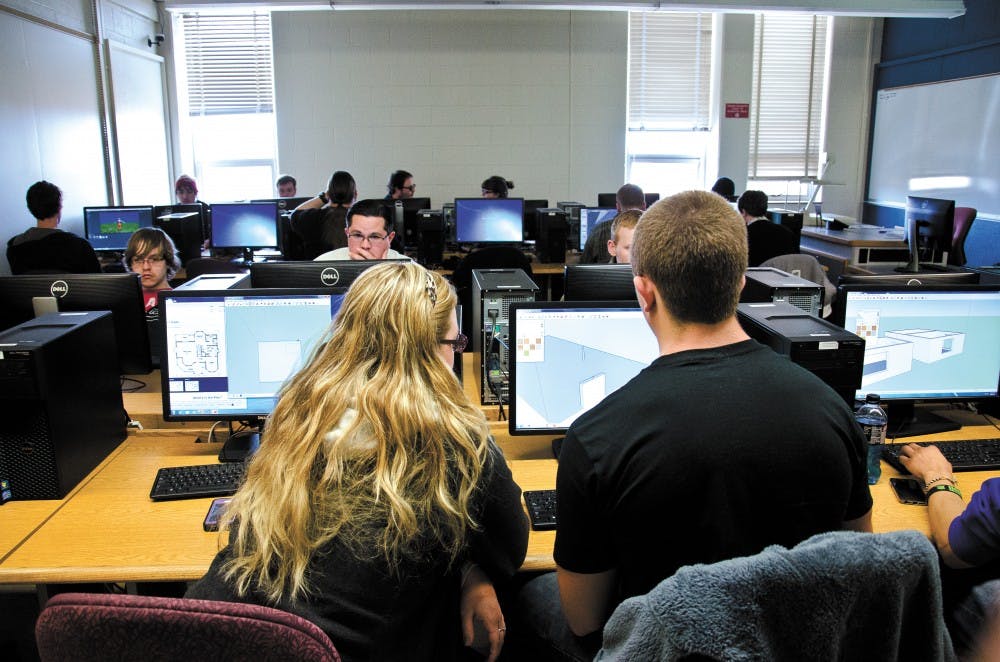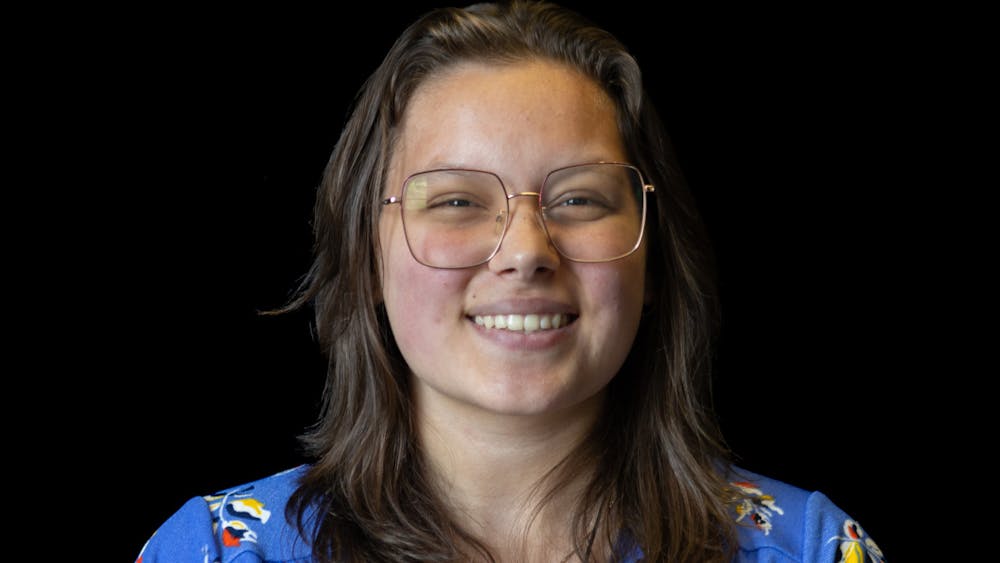Virtual to reality video games to help teach disabled children cognitive skills

St. Johns senior Erika Smith, left, listens to Beal City Junior Chaz Hook, right, talk about a video game that he created March 19 in Pearce Hall.
Video games could change the lives of children with intellectual disabilities as students and professors work together to create a safer way to teach kids functional skills like crossing the street.
Midland sophomore Molly Rossman and Howeel juniorEthan Coggins were asked by College of Science and Technology Assistant Professor Tony Morelli to create virtual reality game simulations for real life scenarios like using an elevator, crossing a street and finding a lost item.
All three of the simulations are almost complete and will be used by a coalition of four professors for a research study involving cognitive disabilities like Down Syndrome.
"I was really excited when Dr. Morelli approached me about it," Coggins said. "It has been a really cool experience knowing I am making these for disabled kids."
Rossman and Coggins will be presenting the three virtual reality simulations Wednesday in the Finch Fieldhouse at the Annual Student Research and Creative Endeavors Exhibition.
Rossman said practicing crossing the street in real life is dangerous and the professors conducting the study would like to test disabled students to see if virtual reality is a safer teaching medium than real life experience.
"We are helping them achieve their research," Rossman said.
Three special education professors are involved in the overall project. Morelli is the only computer science professor. Counseling and special education Assistant Professor Jordan Shurr said he and Morelli have always wanted to work on a project together.
"This is a good marriage of both of our areas," Shurr said.
The game simulations will be used next year to test the effectiveness of practicing functional skills using virtual reality and whether that can be transferred into a real setting. All of the simulations will eventually use the Oculus Rift, a virtual reality headset.
"What we have is these two ideas; simulated with a fake grocery store and in person instruction out in the community," Shurr said. "What virtual technology is able to do is bridge the gap in between those two."
According to Shurr, the benefit of in-classroom simulations is the student's ability to practice a skill multiple times. However, virtual reality can do that as well as portray more realistic details.
"There is so much you can't simulate (in the classroom)," Shurr said. "I'm convinced that there is someway we can use (the Oculus Rift) to bridge those two ideas; the benefits of the (virtual) simulated and the benefits of the real."
The portion of research involving Shurr, Morelli and the other professors is still in the early stages and not in practical application yet. They have finished the review process of going through federal regulations and ethics with CMU's Institutional Review Board so they can use human test subjects.
Shurr said he is confident in the concept, and said the next step might someday involve using video feed from a 360 degree camera instead of graphic design.
"I think what (teachers) are trying to do is test it (technology), see if it works, and if it does work, immediately stretch how it works," Shurr said.




